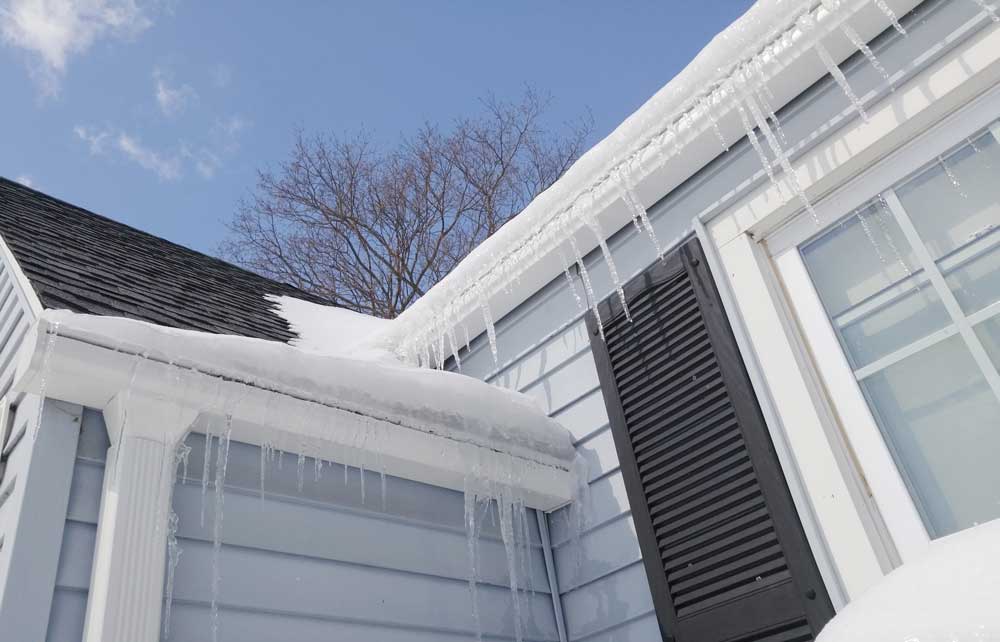Winter brings a variety of concerns when it comes to community building maintenance: From roof issues to frozen pipes to how to treat icy roads and parking areas. At Kipcon we help our clients understand and implement protective measures that help to mitigate the impact of these winter worries. Today we’re sharing some key issues to pay attention to as you prepare for the colder weather ahead.
Pipe Freezing
One common winter worry is pipe freezing. Pipes within both interior and exterior walls can freeze during sub-freezing temperatures. An opening in the exterior of a building can let cold air in, and a lack of insulation around pipes can also lead to freezing.
Kipcon recommends ensuring your pipes are properly insulated as well as investigating the exteriors of your buildings to determine where cold air enters. From there, it’s best to speak to a professional team to determine how best to remedy the cold-air entry problem in those locations.
Icy Roads, Parking Areas, and Walkways
Icy roads, parking areas, and walkways can prove to be perilous for pedestrians and drivers. However, common methods of prevention such as salt can damage concrete and asphalt, ultimately reducing their useful lives. So, it’s important to take steps to address the ice while preventing damage to your concrete by considering alternative approaches.
Water Infiltration
When snow builds up on roofs, it can cause water infiltration into housing units. This infiltration is especially likely in roof valleys, behind chimneys, and at step-ups from lower roof sections where there are vertical walls. And while standard roof construction includes step flashing that extends three to four inches up those vertical walls, snow can often build up beyond those few inches and cause infiltration. It’s important to note that water infiltration is caused by mother nature, not necessarily by a roof defect. So, the impact of this issue can be minimized by connecting with a professional team to prevent it.
At Kipcon we may recommend that a rubber membrane be installed under the siding of a building to provide closure for areas behind step flashing, adding another layer of protection to those vertical walls where snow can accumulate.
Ice Damming
Like water infiltration, ice damming typically occurs during long periods of freezing temperatures and accumulations of snow or ice on roofs. Snow or ice freezes at night and thaws a bit during the day. When that melted moisture runs into the gutter it can re-freeze there. The result is a backup underneath the lower layer of shingles at the roof’s eave line. And this is what we call ice damming.
If the icing continues, the area of ice back up under the shingles extends and the moisture could reach the sheathing. And this leads to water infiltration. It’s also worth noting that shingle roofs are water resistant, not waterproof, and so ice damming may happen regardless. Issues like improper insulation in the attic, a lack of ventilation in the attic, and construction deficiencies may play a role in ice damming but it is best dealt with by investigating and addressing the root causes of your specific roof damming situation.
Specifications and Preventing Winter Worries
Ice damming and snow on your roof can cause water infiltration and leaks. And while they’re caused by mother nature and not a defect in the roof, these issues can be minimized by working with a team like Kipcon.
For example, when you work with Kipcon to plan for a roof replacement or repair you can use rubber or waterproof membranes to help prevent leakage and explore other options for proactively preventing water infiltration, salt damage to roads and walkways, frozen pipes, and ice damming. But, there are both materials and specifications that can help to mitigate the potential damage as a result of ice damming.
Prevent Winter Worries With Kipcon
To learn more about community building maintenance in winter months and how to better prepare your community for colder weather, be sure to contact Kipcon at (800) 828-4118 or click here!

